Namahage
In Akita Prefecture, Namahage is a standard way of disciplining children.
Namahage is a traditional New Year folk event held in Oga City, Akita Prefecture (around the Oga Peninsula). (Currently, it is held on New Year’s Eve.) It is a unique custom in which the gods called Namahage, wearing a demon mask and a straw costume, visits homes to ward off evil spirits and warn lazy people. It is designated as an important intangible folk cultural asset of the country. In 2018, it was registered as a UNESCO’s Intangible Cultural Heritage as a constituent asset of “Raiho-shin: ritual visits of deities in masks and costumes”.
What is Namahage?
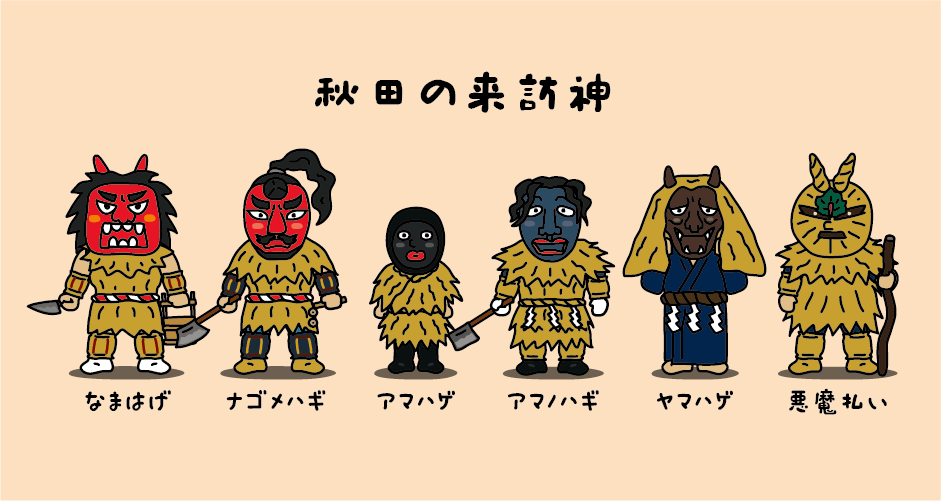
Raiho-shin (visiting deity) is a god that comes to the human world once a year at a fixed time. In Akita Prefecture, Namahage-like events include “Nagomehagi” in Noshiro City, “Yamahage” in Akita City, and “Amanohagi” in Nikaho City, and are widely seen in the coastal areas from Happo Town in the north to Nikaho City in the south.
Overview of the Namahage event
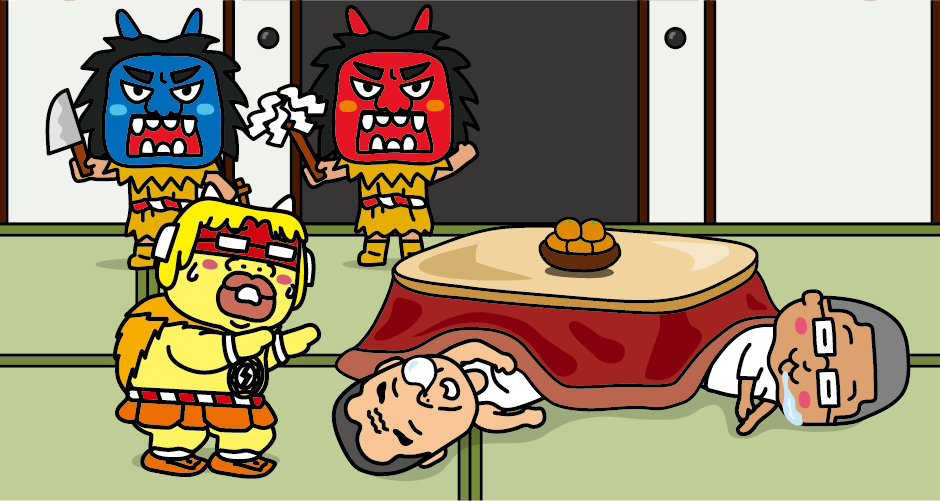
Namahage is a corruption of the word “peel off namomi”. “Namomi” is an old word from the Oga Peninsula, and refers to the red mottled “fire spots (erythema ab igne)” that appear on the skin when exposed to fire for a long time. Namomi is a symbol of “laziness,” which of spending long hours in the sunken hearth or kotatsu during the winter without doing any work. Namahage has the meaning of “warning the lazy”. By the way, the Deba knife that Namahage has is for stripping Namomi, and the bucket is a container to put the stripped Namomi.

On the night of December 31, villagers dressed as Namahage visit houses and go inside looking for children and lazy people, shouting “Are there crying children?”” Are there naughty children? ” In Akita Prefecture, Namahage is understood as a means of educating children. Parents made their children remember the strong fear of Namahage, and disciplined their children by telling them, “If you do something bad, I will give you to Namahage!”
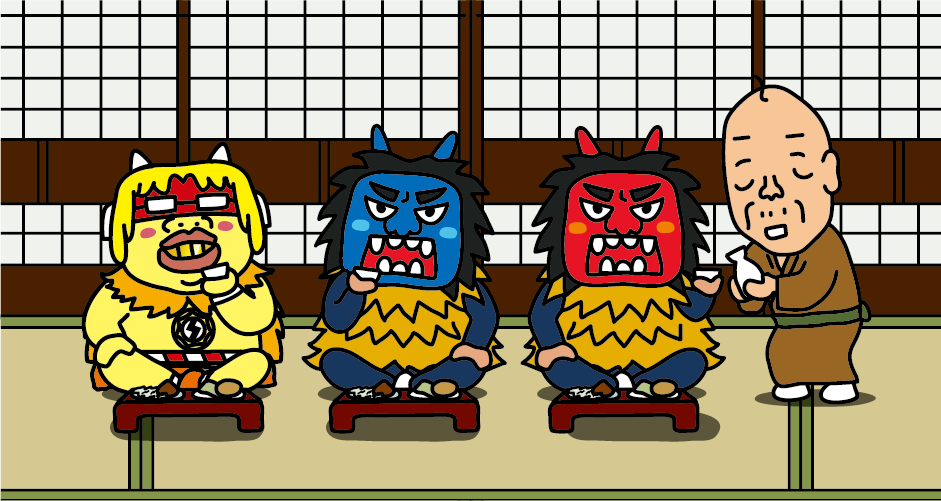
At the house that welcomes the Namahage, the landlord serves food and sake to the Namahage, and the event concludes with a question-and-answer session about this year’s crop harvest and the behavior of the family.
<Sightseeing spots related to Namahage>
Namahage statue
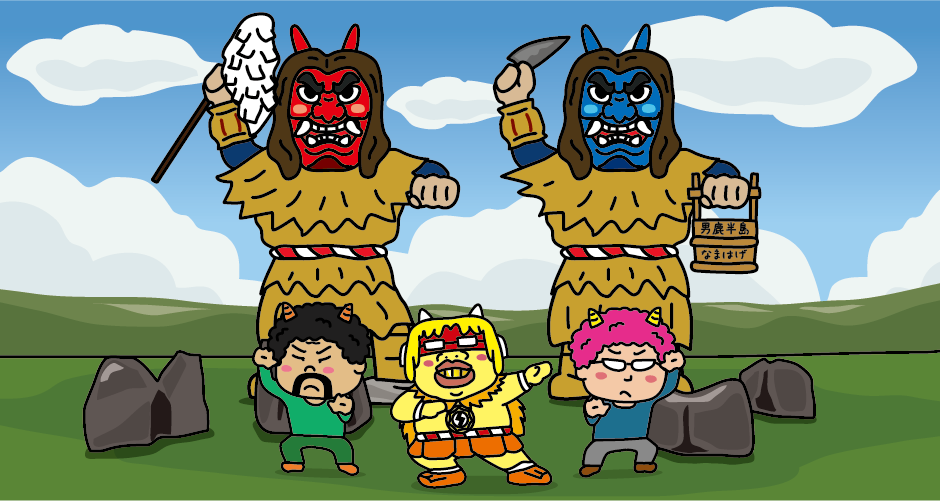
In front of the Oga Tourist Information Center (commonly known as the Namahage Information Center), there is a 15m-tall Namahage monument. There are many Namahage monuments, bridge railings, and signboards all over the Oga Peninsula.
Oga Shinzan Folklore Museum/Namahage Museum
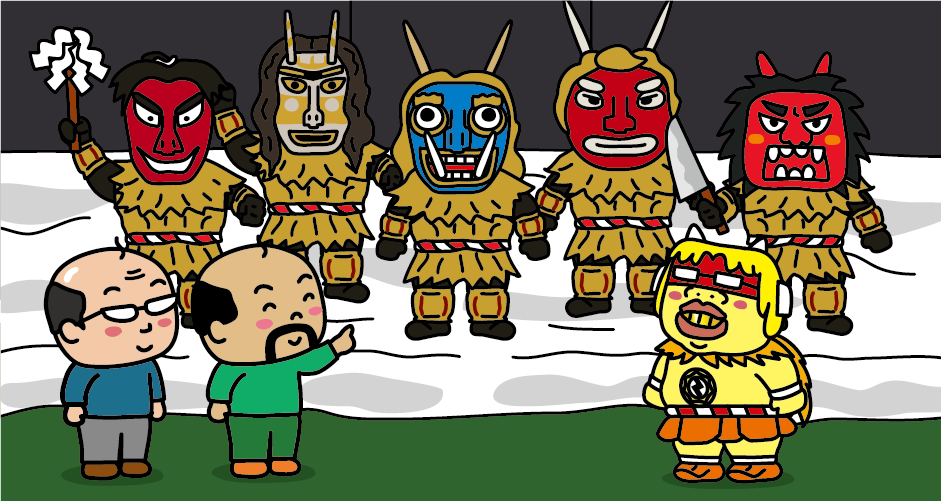
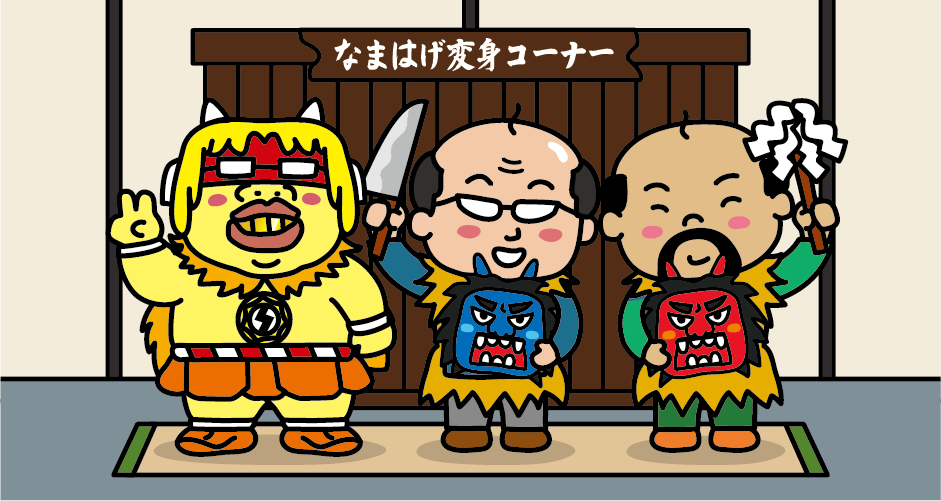
At the Oga Shinzan Folklore Museum, the Namahage event, which is held throughout the Oga Peninsula on New Year’s Eve, is reenacted and demonstrated at any time for tourists. In addition, at the adjacent Namahage Museum, more than 150 masks of a wide variety of Namahage from the Oga Peninsula are on display. You can also take a commemorative photo wearing a Namahage mask and costume.
Namahage Sedo Festival
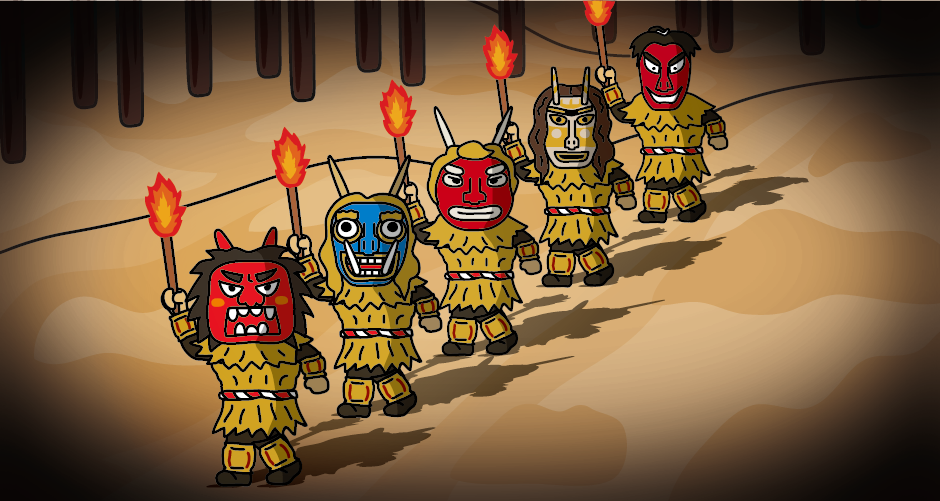

The “Namahage Sedo Festival” is held on the 2nd Friday, Saturday and Sunday of February every year on the premises of “Shinzan Shrine” located in Oga City. Sedo is a bonfire that is lit in front of the gods and buddhas. One of the five major snow festivals in the Tohoku region, Namahage gather from each village in Oga City. Namahage have different masks depending on the village. Traditional events such as “Namahage Taiko (drumming show)”, “Namahage Odori (dancing show)”, and the climax of “Namahage Gezan (descending the mountain)” are performed under the burning fire.
Access to Namahage Museum
Approximately 4 hours from JR Tokyo Station to JR Akita Station on the Akita Shinkansen. Approximately 1 hour from JR Akita Station to JR Oga Station. Approximately 25 minutes by shuttle bus from JR Oga Station to Namahagekan. *Reservations are required for the shuttle bus (must be made at least one day in advance)

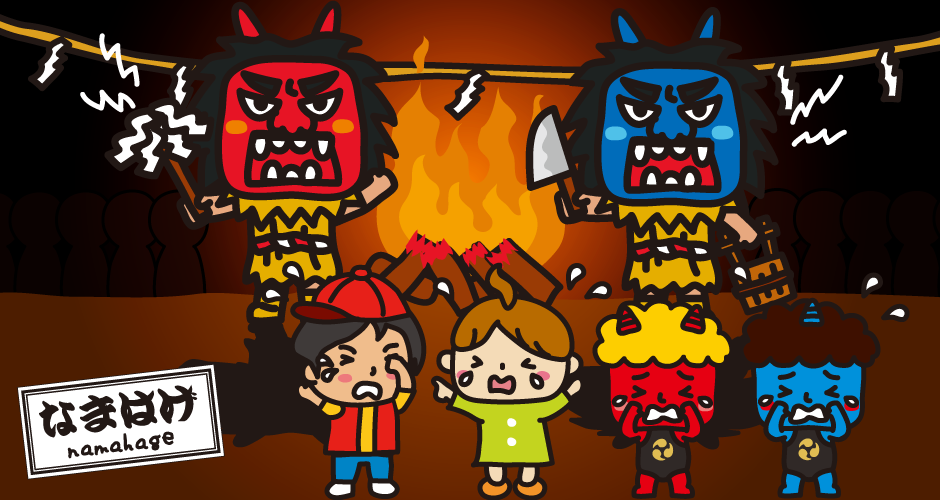


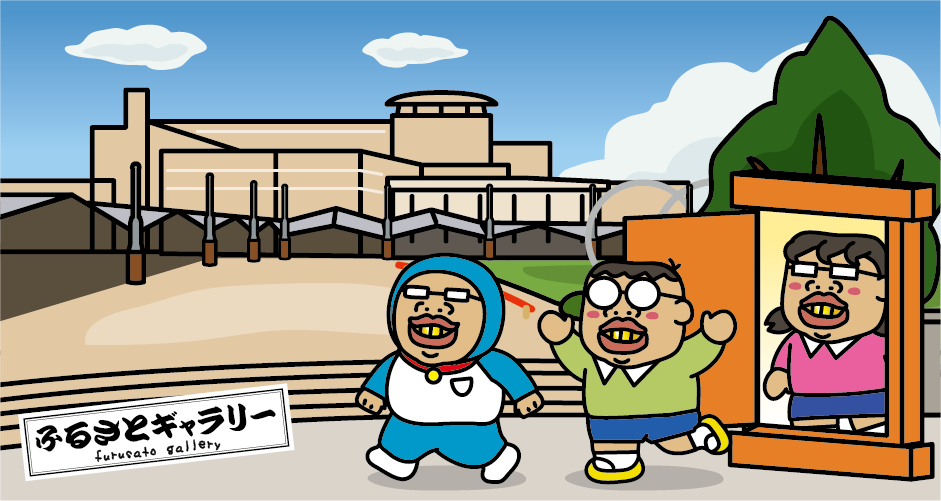
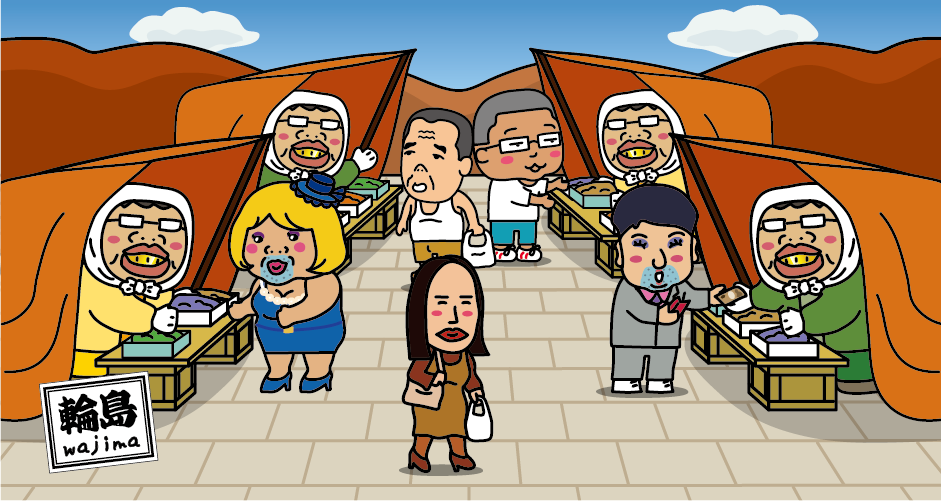

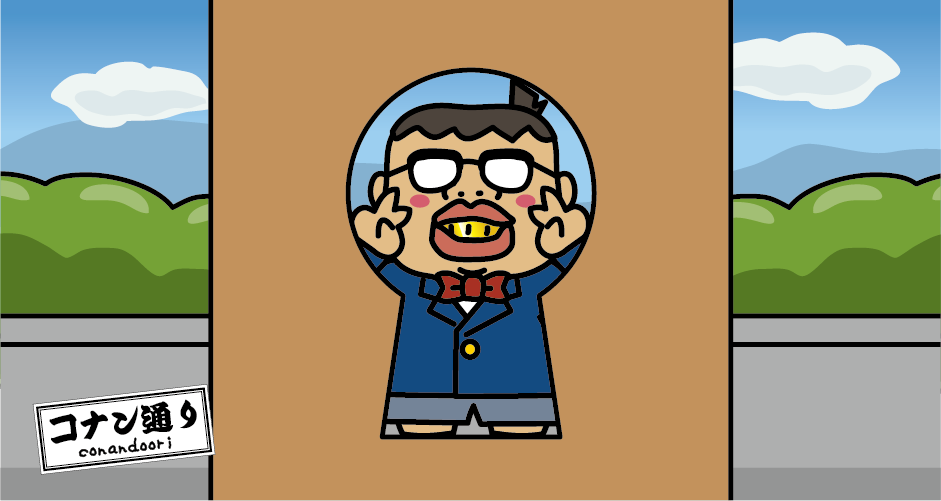
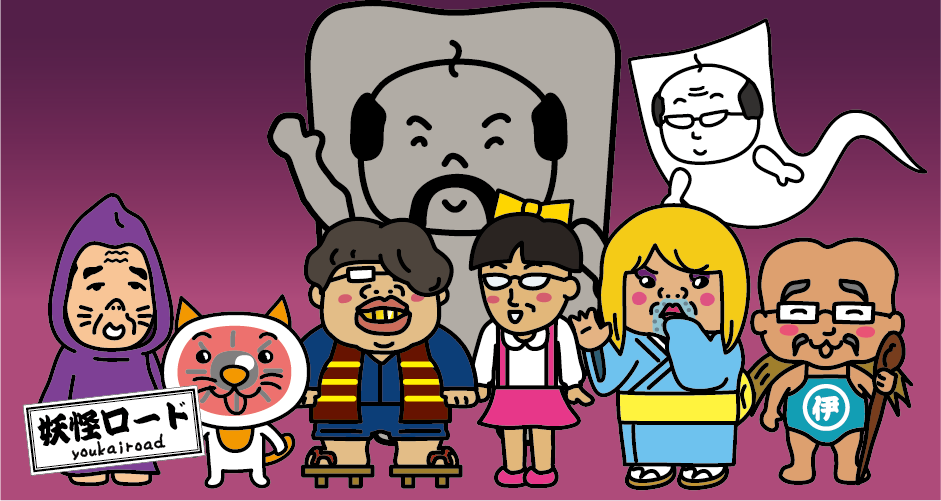

You need to login to comment on an article.